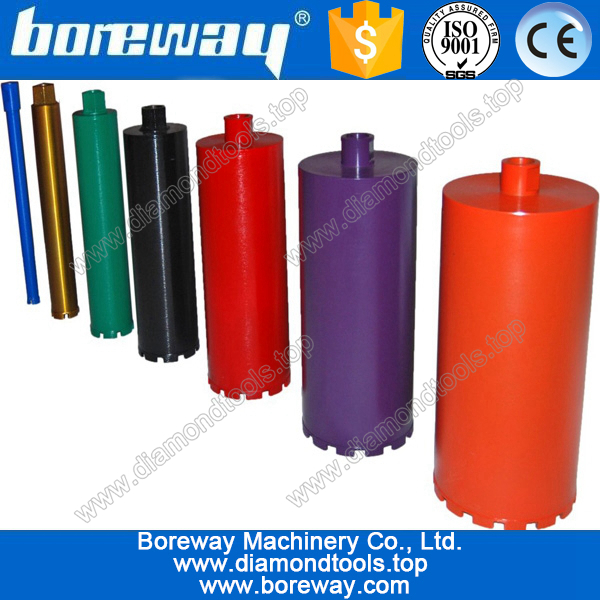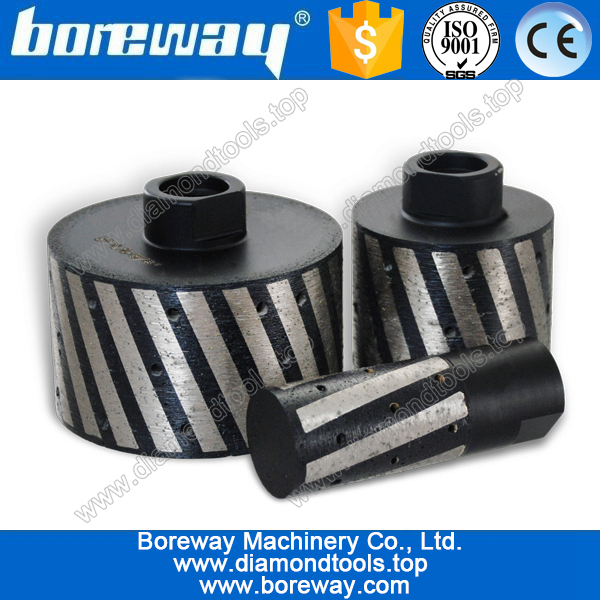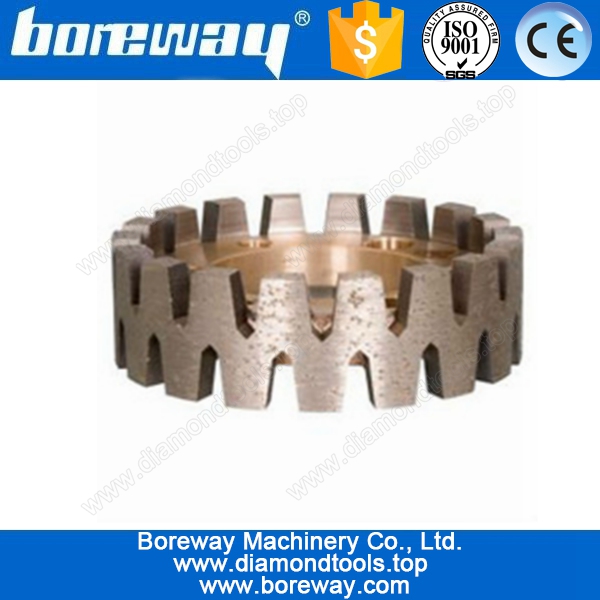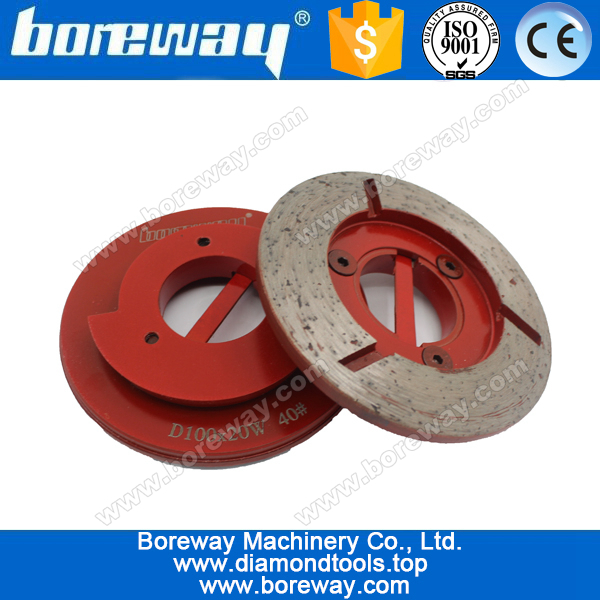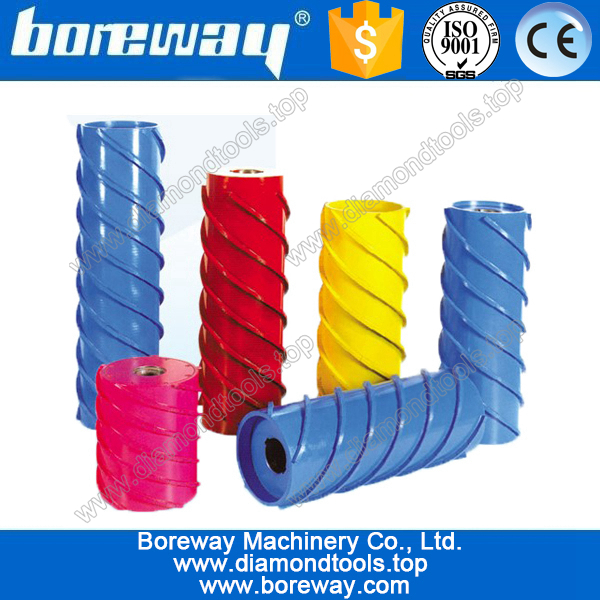When the diamond meets the glass
Chois.dong
Www.boreway.com
2017-09-04 18:47:08
Diamond is the hardest material in nature, mainly due to its internal carbon-carbon covalent bond formation of the very high three-dimensional network structure. It is the combination of each carbon atom and the adjacent four carbon atoms between the SP3 hybrid covalent bonds, so that the diamond to the reputation of "King of hardness", "King of Gems" reputation. Of course, in addition to high hardness, diamond also has the highest known thermal conductivity, high melting point, high visible light refractive index and other excellent properties. This also makes the diamond in the mechanical cutting, grinding, drilling and other cutting-edge industrial field has a wide range of applications.
But "gold without enough color, white Bi slightly flawed", as a crystalline material, diamond anisotropy lead to its different crystal orientation in the nature of the huge difference. Especially its most prone to fracture and destruction of the {111} cleavage surface, become the largest diamond "weaknesses." In fact, in addition to the atomic arrangement of highly ordered crystal materials, there is a class of material - amorphous materials (such as glass), due to the high degree of atomic arrangement disorder, so that the nature of each direction are very uniform (ie isotropic) Features. When the "diamond" and "glass" these two concepts meet, can produce a very strong direction of the isotropic "glassy diamond" in recent decades, despite a lot of effort, the scientists for how To achieve the chemical bond between the atoms and the same as the diamond, the internal arrangement of atoms like glass-like disorder of this problem, still helpless.
Recently, Zeng Zhengdan, a researcher at the Beijing High Voltage Science Research Center, and his team used high-pressure technology in combination with laser in-situ heating to synthesize completely non-explored temperatures and pressures (500,000 standard atmospheres, about 1500 degrees Celsius) for the first time. Crystalline block of diamond. This new material is confirmed by the pure sp 3 carbon-carbon bond, and also has a true "glass heart" - the internal atoms proved to be highly disordered. Therefore, it has the advantages of both diamond and glass: carbon atoms are combined with sp3 to form a three-dimensional network structure, the material exhibits a high strength (body elastic modulus close to the traditional diamond); uniform nature of isotropic, So that it no longer exists crystal cleavage surface. Which may become the strongest known glassy material.
In the past three decades, there have been many attempts to synthesize amorphous diamond, the main way is through the vapor deposition technology to try to synthesize a relatively high content of sp3 bond amorphous carbon film, this The film material is called diamond-like carbon. However, the "block amorphous diamond" formed by the combination of sp 3 bonds is only present in the theoretical calculations. This study, for the first time, under the high temperature and high pressure, has made it impossible to have new materials, making the "glassy" diamond from the dream into reality, changing the traditional understanding of the diamond; and It is also possible to further explore the various properties of this material and to develop its potential applications while relieving the pressure to return to ambient temperature and atmospheric conditions while still maintaining a stable amorphous diamond material.
But "gold without enough color, white Bi slightly flawed", as a crystalline material, diamond anisotropy lead to its different crystal orientation in the nature of the huge difference. Especially its most prone to fracture and destruction of the {111} cleavage surface, become the largest diamond "weaknesses." In fact, in addition to the atomic arrangement of highly ordered crystal materials, there is a class of material - amorphous materials (such as glass), due to the high degree of atomic arrangement disorder, so that the nature of each direction are very uniform (ie isotropic) Features. When the "diamond" and "glass" these two concepts meet, can produce a very strong direction of the isotropic "glassy diamond" in recent decades, despite a lot of effort, the scientists for how To achieve the chemical bond between the atoms and the same as the diamond, the internal arrangement of atoms like glass-like disorder of this problem, still helpless.
Recently, Zeng Zhengdan, a researcher at the Beijing High Voltage Science Research Center, and his team used high-pressure technology in combination with laser in-situ heating to synthesize completely non-explored temperatures and pressures (500,000 standard atmospheres, about 1500 degrees Celsius) for the first time. Crystalline block of diamond. This new material is confirmed by the pure sp 3 carbon-carbon bond, and also has a true "glass heart" - the internal atoms proved to be highly disordered. Therefore, it has the advantages of both diamond and glass: carbon atoms are combined with sp3 to form a three-dimensional network structure, the material exhibits a high strength (body elastic modulus close to the traditional diamond); uniform nature of isotropic, So that it no longer exists crystal cleavage surface. Which may become the strongest known glassy material.
In the past three decades, there have been many attempts to synthesize amorphous diamond, the main way is through the vapor deposition technology to try to synthesize a relatively high content of sp3 bond amorphous carbon film, this The film material is called diamond-like carbon. However, the "block amorphous diamond" formed by the combination of sp 3 bonds is only present in the theoretical calculations. This study, for the first time, under the high temperature and high pressure, has made it impossible to have new materials, making the "glassy" diamond from the dream into reality, changing the traditional understanding of the diamond; and It is also possible to further explore the various properties of this material and to develop its potential applications while relieving the pressure to return to ambient temperature and atmospheric conditions while still maintaining a stable amorphous diamond material.









